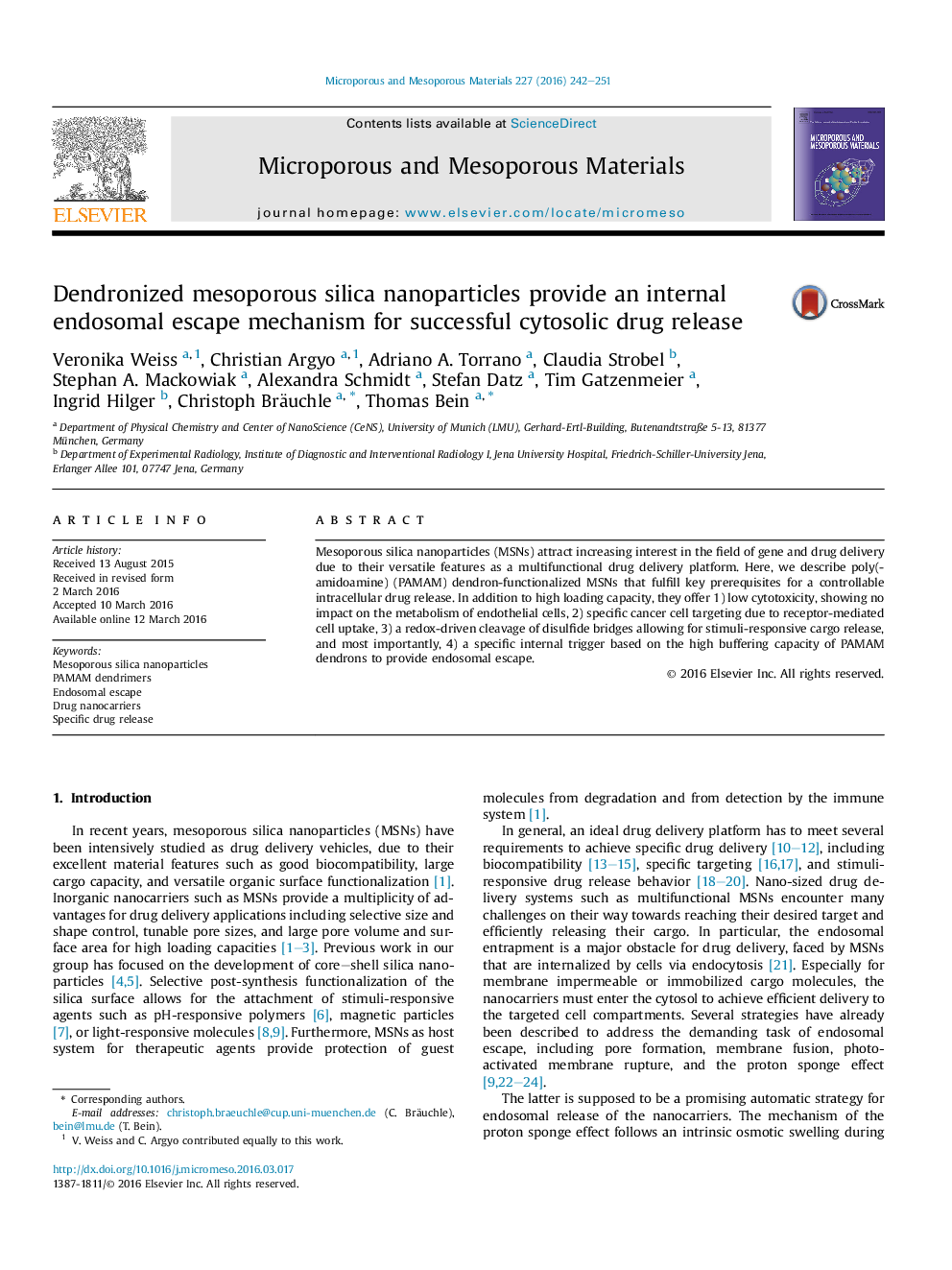| Article ID | Journal | Published Year | Pages | File Type |
|---|---|---|---|---|
| 72157 | Microporous and Mesoporous Materials | 2016 | 10 Pages |
•Dendronized mesoporous silica nanoparticles for intracellular drug delivery.•Low cytotoxicity with no impact on the metabolism of endothelial cells.•Specific cancer cell targeting due to receptor-mediated cell uptake.•Redox-driven cleavage of disulfide bridges allows stimuli-responsive cargo release.•Endosomal escape based on the high buffering capacity of PAMAM dendrons.
Mesoporous silica nanoparticles (MSNs) attract increasing interest in the field of gene and drug delivery due to their versatile features as a multifunctional drug delivery platform. Here, we describe poly(amidoamine) (PAMAM) dendron-functionalized MSNs that fulfill key prerequisites for a controllable intracellular drug release. In addition to high loading capacity, they offer 1) low cytotoxicity, showing no impact on the metabolism of endothelial cells, 2) specific cancer cell targeting due to receptor-mediated cell uptake, 3) a redox-driven cleavage of disulfide bridges allowing for stimuli-responsive cargo release, and most importantly, 4) a specific internal trigger based on the high buffering capacity of PAMAM dendrons to provide endosomal escape.
Graphical abstractPAMAM dendron-functionalized mesoporous silica nanoparticles provide an intrinsic endosomal escape pathway for an efficient cytosolic drug delivery for membrane-impermeable and immobilized cargo molecules. Furthermore, this nanocarrier system offers low cytotoxicity, specific receptor-mediated cancer cell uptake and a redox-driven cargo release from the mesopores.Figure optionsDownload full-size imageDownload as PowerPoint slide
